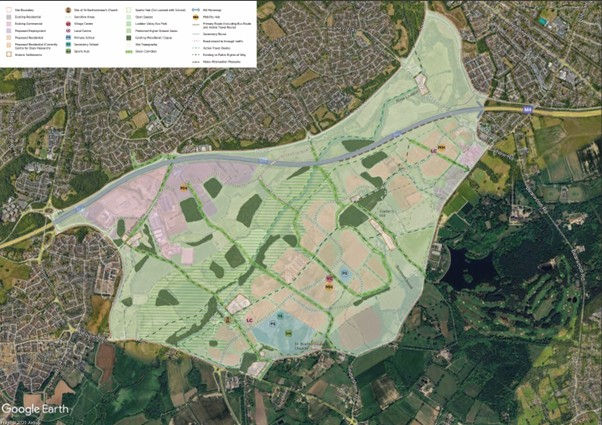When is Green Belt not Green Belt?
- paulstevens24

- Jun 8, 2022
- 3 min read
It was a brief moment of celebration (for me at least) when the Conservatives lost their overall majority in Wokingham at the recent local election, because the Revised Local Plan Update including the proposed “Loddon Valley Garden Village” went down with them.
However, the prospect of building houses on Hall Farm has NOT gone away and my sources at the University of Reading tell me it is still very much being planned for. This is disappointing, particularly as we at SOLVE Hall Farm have now been invited to meet with representatives from the University (current owners of Hall Farm) to discuss our “alternative vision”.
As you are no doubt aware, Lib Dem Councillor Clive Jones is now in charge at Wokingham, as a result of his “Wokingham Borough Partnership” which brings together the 23 Lib Dems with 3 Labour and 2 Independent Councillors to form an overall majority of 28 to the Conservatives 26. We now have an opportunity to rethink and reassess how we deal with housing need across the Borough.
But I suspect that politics may yet have a larger part to play in the decision making process than a truly fair or objective assessment of where really is the best place to build. Here on green4grow we have suggested Ashridge would be better than Hall Farm, which I still consider to be a better choice than Hall Farm with its associated Flood risk, Heritage, Biodiversity, Agricultural and Landscape value.
But the best choice in terms of getting people out of their cars and onto Public Transport remains Twyford, because of its proximity to a railway, specifically, the new Elizabeth Line.
However, as has been pointed out by the previous administration, and others, Twyford is Green Belt. There is also the argument that Network Rail have not agreed to a new station at Twyford. Then there is the thorny political issue of opposition to this by the Lib Dem Councillors of Twyford.
But let us just address the Green Belt issue:
“At least four cabinet ministers back a plan to allow the construction of new homes within half a mile of train stations in green belt areas, which was pushed by Sajid Javid while he was Housing Secretary. One minister said that more people were now in favour of a limited relaxation of the existing protections in order to free up land for homes in their areas, including for their children and grandchildren.”
“Quite simply, house prices have increased as the supply of houses cannot meet the demand in urban areas due to developments being constrained by Green Belt land that isn't fit for purpose. Those without adequate income find themselves pushed out, and in many cases, they’re forced to make long-distance commutes to get to work across the very Green Belt that is restricting development.”
A strategic housing land availability assessment must consider the following factors:
· Sites of Special Scientific Interest (SSSI)
· Protected Sites (Birds and Habitat Directives)
· Areas of Outstanding Natural Beauty
· Heritage Coast
· Heritage Assets
· National Parks
· Flood Risk
Way back in December 2016, government ministers publicly backed a “swaps” scheme for Green Belt development. This policy enabled councils to meet their demanding housing targets by freeing up areas for development in return for a separate area of land, which would then be protected. The bottom line: this plan requires no net loss of Green Belt and enhances the landscape.
Pictured below is the current Leader of Wokingham Borough Council, Clive Jones, supporting SOLVE Hall Farm in their opposition to building at Hall Farm, albeit before he was elected as Leader at WBC.
So, Clive, it was great to meet you, and thank you for your support. But where are we now in terms of a Local Plan?






Comments